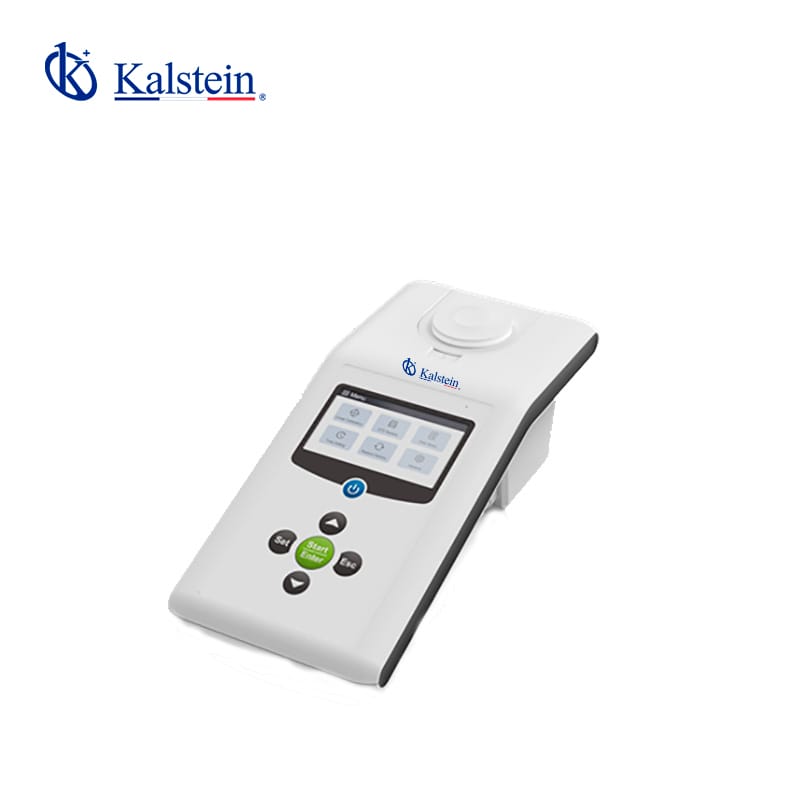The use of a turbidity meter in the laboratory is essential to ensure the accuracy and reliability of results. This device measures the amount of light scattered by particles in suspension in a liquid, which is crucial for various scientific and medical applications.
In this article, we will explore how to effectively use a turbidity meter, providing practical tips and step-by-step tutorials to achieve the best results. Additionally, we will highlight the latest trends in medical technology and recent advances in laboratory research.
Introduction to Turbidity Meter: Fundamentals and Applications
The turbidity meter is a vital tool in many laboratories, used to measure the clarity of liquids. This device is essential in the food industry, pharmaceuticals, water treatment, and clinical laboratories. Results obtained with a turbidity meter can directly influence product quality, water safety, and medical diagnostics accuracy.
To fully understand how to use a turbidity meter, it is important to know its main components: the light source, light detector, and sample cell. The light source emits a beam that passes through the sample, and the detector measures scattered light. The sample cell contains the liquid to be analyzed. Turbidity values are expressed in Nephelometric Turbidity Units (NTU) or Formazin Turbidity Units (FTU).
Preparation of Turbidity Meter: Setup and Calibration
Before using a turbidity meter, it is crucial to set it up correctly and calibrate it to ensure the accuracy of results. Calibration is done using known turbidity standards, usually formazin solutions with specific NTU values.
First, turn on the device and allow it to stabilize. Select the appropriate calibration standard and introduce the solution into the sample cell. Follow the manufacturer’s instructions to adjust the meter to the standard values. Perform this calibration periodically to maintain device accuracy. Proper calibration is essential for obtaining reliable and consistent results.
Measurement Procedure: Step-by-Step for Optimal Results
The turbidity measurement process involves several critical steps to ensure result accuracy and repeatability. First, ensure the sample is well mixed but without air bubbles, as these can interfere with measurement.
Fill the sample cell to the indicated mark, avoiding spills. Insert the cell into the meter and close the lid to prevent external light interference. Initiate measurement following device instructions. Record the displayed turbidity value. Repeat the process for multiple samples to ensure consistency. This procedure ensures each measurement is accurate and truly reflects the liquid’s clarity.
Results Interpretation: Analysis and Practical Applications
Once turbidity results are obtained, it is crucial to interpret the data correctly. High NTU values indicate a greater amount of suspended particles, suggesting contamination in water samples or pharmaceutical products.
In clinical applications, turbidity levels can help identify infections or the presence of abnormal proteins in biological fluids. In the food industry, turbidity can affect product quality, such as beverages and dairy products. Understanding the importance of these results allows informed decisions to improve product quality and ensure safety and efficacy in medical applications.
Maintenance and Care of Turbidity Meter: Essential Tips
Regular maintenance of the turbidity meter is essential to ensure its longevity and continued accuracy. After each use, clean the sample cell with distilled water to avoid buildup that may affect future measurements.
Regularly inspect the light source and light detector to ensure they function properly. Replace worn components according to manufacturer recommendations. Store the device in a dry, dust-free location. Proper maintenance not only extends the meter’s life but also ensures long-term accuracy and reliability of results.
Trends and Advances in Turbidity Measurement: Future of Laboratory Technology
The latest trends in medical and laboratory technology have led to significant advances in turbidity measurement. New turbidity meters now incorporate digital technology for greater accuracy and ease of use. Additionally, many modern devices are equipped with connectivity capabilities to transfer data directly to laboratory management systems.
Recent advances in laboratory research have led to the development of more sensitive and specific turbidity measurement methods, improving detection of particles at extremely low levels. These innovations not only enhance measurement quality but also facilitate compliance with stricter regulations in various industries. Staying updated with these trends is crucial for any laboratory looking to improve its procedures and results.
Conclusion
Effectively using a turbidity meter requires a clear understanding of its fundamentals, proper calibration, precise measurement procedure, and regular maintenance. Recent advances in medical and laboratory technology have significantly enhanced these devices, offering more accurate and reliable results.
By following this detailed guide and practical tips presented, laboratories can optimize their turbidity measurements and contribute to ongoing advancements in scientific and medical research.
If you’re seeking a blend of innovation and quality, you’ve come to the right place. At https://kalstein.de/category-product/laboratory-line/turbidity-meter/ we offer you the luxury to explore our exclusive catalog of laboratory equipment. We manufacture each piece of equipment with a level of excellence. Our intuitive and agile online shopping channels are designed for your convenience, ensuring the friendliest prices. Don’t hesitate any longer, we bring science to life, it’s time to become part of our community. https://kalstein.de/

